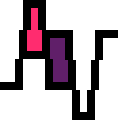Difference between revisions of "NEC Avenue"
From NEC Retro
| Line 51: | Line 51: | ||
*''[[Quiz Avenue II]]'' (1991) | *''[[Quiz Avenue II]]'' (1991) | ||
*''[[Might and Magic]]'' (1992) | *''[[Might and Magic]]'' (1992) | ||
| + | *''[[Rainbow Islands]]'' (1993) | ||
| + | |||
| + | ===[[Super CD-ROM²]]=== | ||
*''[[Forgotten Worlds]]'' (1992) | *''[[Forgotten Worlds]]'' (1992) | ||
*''[[Bonanza Bros.]]'' (1992) | *''[[Bonanza Bros.]]'' (1992) | ||
| Line 57: | Line 60: | ||
*''[[Horror Story]]'' (1993) | *''[[Horror Story]]'' (1993) | ||
*''[[CAL II]]'' (1993) | *''[[CAL II]]'' (1993) | ||
| − | |||
*''[[Sotsugyou: Graduation]]'' (1993) | *''[[Sotsugyou: Graduation]]'' (1993) | ||
*''[[Mahjong on the Beach]]'' (1993) | *''[[Mahjong on the Beach]]'' (1993) | ||
| Line 67: | Line 69: | ||
*''[[Chiki Chiki Boys]]'' (1994) | *''[[Chiki Chiki Boys]]'' (1994) | ||
*''[[Dragon Knight III]]'' (1994) | *''[[Dragon Knight III]]'' (1994) | ||
| − | |||
*''[[Tanjou Debut]]'' (1994) | *''[[Tanjou Debut]]'' (1994) | ||
*''[[Basted]]'' (1994) | *''[[Basted]]'' (1994) | ||
| Line 78: | Line 79: | ||
*''[[Space Invaders: The Original Game]]'' (1995) | *''[[Space Invaders: The Original Game]]'' (1995) | ||
*''[[Doukyuusei]]'' (1995) | *''[[Doukyuusei]]'' (1995) | ||
| − | |||
===[[PC-9801]]=== | ===[[PC-9801]]=== | ||
*''[[Tanjou Debut]]'' (1993) | *''[[Tanjou Debut]]'' (1993) | ||
*''[[Mercurius Pretty]]'' (1994) | *''[[Mercurius Pretty]]'' (1994) | ||
| + | |||
| + | ===[[Arcade CD-ROM²]]=== | ||
| + | *''[[Strider Hiryu]]'' (1994) | ||
| + | *''[[Madou Monogatari I: Honou no Sotsuenji]]'' (1996) | ||
===[[PC-FX]]=== | ===[[PC-FX]]=== | ||
Latest revision as of 22:01, 5 December 2022

|
| NEC Avenue |
|---|
| Founded: 1987 |
| Defunct: 1998 |
| Merged into: NEC Interchannel (1995) |
| Headquarters: Japan |
This short article is in need of work. You can help NEC Retro by adding to it.
NEC Avenue (NECアベニュー) was a software development division of NEC. It was merged with other studios to form NEC Interchannel in 1995.
Alongside Hudson Soft, NEC Avenue was responsible for publishing a significant portion of the PC Engine, CD-ROM² and Super CD-ROM² games library. It also created some accessories for the console, and published video game-related music CDs (which in 1994 represented about 10% of the business[1]).
The company should not be confused with other divisions of NEC, including NEC Home Electronics which was also publishing titles for the PC Engine family.
Contents
Softography
PC Engine
- Fantasy Zone (1988)
- Space Harrier (1988)
- SonSon II (1989)
- Side Arms (1989)
- F-1 Dream (1989)
- Juuouki (1989)
- Download (1990)
- Daimakaimura (1990)
- Operation Wolf (1990)
- Darius Plus (1990)
- After Burner II (1990)
- Thunder Blade (1990)
- Daisenpuu (1990)
- OutRun (1990)
- Darius Alpha (1990)
- Morita Shougi PC (1991)
CD-ROM²
- Juuouki (1989)
- Side Arms Special (1989)
- Super Darius (1990)
- ROM² Karaoke Vol. 1 (1990)
- ROM² Karaoke Vol. 2 (1990)
- ROM² Karaoke Vol. 3 (1990)
- ROM² Karaoke Vol. 4 (1990)
- ROM² Karaoke Vol. 5 (1990)
- Quiz Avenue (1991)
- Download 2 (1991)
- Hellfire S (1991)
- Splash Lake (1991)
- Daisenpuu Custom (1991)
- Quiz Avenue II (1991)
- Might and Magic (1992)
- Rainbow Islands (1993)
Super CD-ROM²
- Forgotten Worlds (1992)
- Bonanza Bros. (1992)
- Dragon Knight II (1992)
- Gain Ground SX (1992)
- Horror Story (1993)
- CAL II (1993)
- Sotsugyou: Graduation (1993)
- Mahjong on the Beach (1993)
- Super Darius II (1993)
- CAL III: Kanketsuhen (1994)
- Monster Maker: Yami no Ryuukishi (1994)
- Puyo Puyo CD (1994)
- Tenchi o Kurau (1994)
- Chiki Chiki Boys (1994)
- Dragon Knight III (1994)
- Tanjou Debut (1994)
- Basted (1994)
- Quiz Avenue III (1994)
- Ane-San (1995)
- Dragon Knight & Graffiti (1995)
- Tenchi Muyou! Ryououki (1995)
- Renny Blaster (1995)
- Asuka 120% Maxima Burning Fest. Maxima (1995)
- Space Invaders: The Original Game (1995)
- Doukyuusei (1995)
PC-9801
- Tanjou Debut (1993)
- Mercurius Pretty (1994)
Arcade CD-ROM²
- Strider Hiryu (1994)
- Madou Monogatari I: Honou no Sotsuenji (1996)
PC-FX
- Doukyuusei 2 (1996)
- Dragon Knight 4 (1997)
Accessories
- Avenue Pad 3 (1991)
- Avenue Pad 6 (1993)
References
Sega Retro has more information related to NEC Avenue
|
